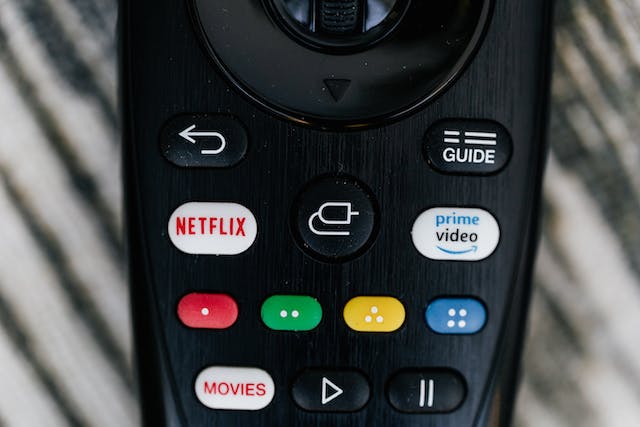
As the landscape of legal cannabis and cannabidiol (CBD) unfolds across the United States, brands within this industry are blazing trails in digital advertising.
With growing audiences now using connected TV (CTV) devices, CBD and ultimately cannabis brands find themselves at the cusp of a marketing opportunity for increased precision, reach, and engagement.
As more states adjust their laws and set the stage for federal legalization – CTV devices emerge as a powerful tool.
Reaching Target Audiences through CTV
CTV advertising offers an unprecedented level of audience specificity, a feature particularly beneficial for CBD brands who are newer to the market and need to answer the crucial question of, “Who is my customer?”
Unlike traditional TV advertising that casts a wide net, CTV enables brands to target viewers based on detailed data such as viewing habits, age, interests, and demographics.
This precision ensures that CBD brands can tailor their messages to resonate with individuals more likely to be interested in their products. For instance, a CBD brand with products designed for pain relief can target consumers who are statistically more likely to experience chronic pain, while those with a focus on relaxation or anxiety relief might target an entirely separate wellness-focused audience.
And don’t be fooled believing this is only for a younger demographic of consumers. Although Gen Z and Millennials are the leading demographics embracing CTV, with 63% of those aged 18-34 using it daily, CTV is popular across all age groups, with 58% of those 35-54 and 27% that are 55 and older using it daily.
Some brands still believe, understandably, that the costs of CTV advertising may be too high or that they cannot advertise products outside of topicals. However, these are no longer rigid barriers to entry with the right strategic approach.
As laws evolve, the same targeted approach can be adopted by cannabis brands to connect with consumers who have shown an inclination towards that content. By zeroing in on specific segments, this will encourage higher engagement rates, better product education, and clarity around who to reach for the best ROI.
ACR Technology & Personalization
Once you understand your target audience, it’s time to understand where to reach them! A way to do that is by using Automatic Content Recognition (ACR) technology.
This allows advertisers to split their campaigns and target different demographics based on their viewing patterns. For CBD brands, this means the ability to distinguish between a viewer who prefers wellness products and one who enjoys culinary shows, tailoring the message to appeal to each viewer’s interests and potential CBD usage.

With ACR targeting, a CBD brand can deliver educational messaging about the benefits of CBD for wellness to the self-care-focused viewer, while pitching CBD-infused cooking oils to the food enthusiast.
This strategic segmentation not only improves the ad’s relevance but also increases the likelihood of conversion.
Today’s digital ads provide the flexibility for customization, ensuring that the content delivered is most relevant enthusiast or prospective buyer.
These units can now encompass various elements such as testimonials, geotargeting, dayparting capabilities, ISI information, and QR codes, ensuring an engaging ad experience.
For instance, a late-night ad slot could feature products for sleep, while mid-day programming might be better suited for stress-relief focused products.
There are still markets that are less inclined to adopt this growing category, which has been a barrier to scalable advertising, but CTV provides a discreet and personalized way to educate and market to interested consumers.
Growing CTV Usage
CTV isn’t a new playing field at this point; it’s becoming the main stage. According to TV Technology, cable subscribers had an 11% decline in 2022, and expects to see a 16% decline by 2025, which equated to roughly 7.37 million households in 2022.
Whereas, over-the-top (OTT) forecasts continued growth, led by the availability of over 80 OTT services and historically ad-free platforms introducing ad-supported options, as well as real-time content. The interactive nature of CTV platforms also allows for innovative ad formats that can increase viewer attention, such as clickable ads that lead directly to a product page or nearby retailers.
As cannabis brands watch the market mature, they can look to CTV as a fertile ground ready for when federal legalization allows them to fully harness its potential.
The increase in CTV adoption not only means a broader audience but also a greater acceptance and expectation of seeing cannabis-related advertising in mainstream media. That said, being the “first” to anything doesn’t come without hurdles.
As of today, at least a few CTV platforms require seeing the ad creative before final approval and may only permit specific products to be advertised. This underscores the importance of collaborating with an ad tech partner well-versed in these intricacies, the ability to scale, and can help you navigate the compliance journey.
Streaming TV devices are paving the way for a new era of digital marketing, particularly for this category. With its ability to target specific audiences, its growing prevalence, and the personalization advancements, CTV is an ideal platform for CBD brands to reach their varied demographic and understand who their audiences are for highly effective campaigns.







